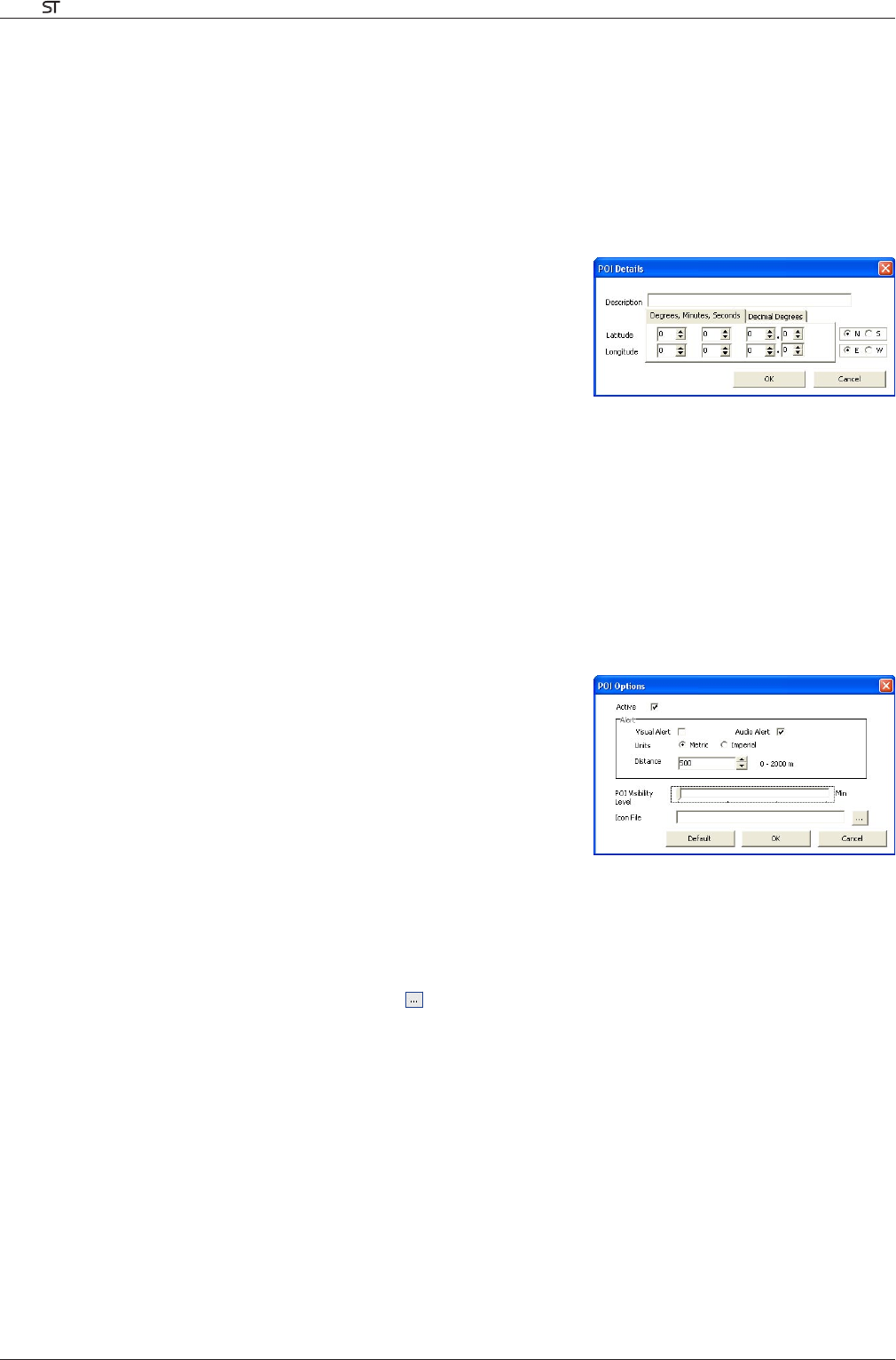
36
Smart V 3.0 | User Manual for Palm OS
®
5
Points of Interest (POI) Editor
You can add custom Points of Interest (POIs) using the POI Editor. Custom POIs can be set to announce when in
close proximity at the Active POI Settings screen.
Step 1. Create a Custom POI File
1. Create a New POI File.
• On the Map menu, click POIs. The POI Editor window will open.
• On the File menu of the POI Editor, click New Text File. The POI
File Name window will open.
• Type a name for the file in the File Name box and click OK. The
file name can be up to eight characters with no spaces.
2. Add a POI to the POI File.
• On the Edit menu, click New. The POI Details window will
open.
• Type a description for the POI in the Description box.
• On the Degrees, Minutes, Seconds tab, type or select the degree, minute and second of the POI
longitude in the Longitude boxes.
• On the Degrees, Minutes, Seconds tab, type or select the degree, minute and second of the POI latitude
in the Latitude boxes.
3. Repeat step 2 until all POIs have been added to the POI file.
4. On the File menu, click Save. The POI file is saved.
Step 2. Save Custom POI File to your handheld
1. On the File menu, click Save to Device. The POI Options window will open.
2. Modify the POI settings as required:
• To activate the POI select the Active check box. If you do
not activate the POI, you will only be able to configure the
Importance and Icon File settings.
• To enable a visual warning when the POI is in close proximity,
select the Visual Alert check box.
• To enable an audible chime when the POI is in close proximity,
select the Audio Alert check box.
• To change the units used to measure distance for this POI, select
the
Metric or Imperial option.
• Select the distance from the POI at which the visual warning should display or the audible chime is heard,
from the Distance box.
• Move the Importance slider left or right to indicate the priority that the POI has where two or more POIs
are in the same locale.
• Type the path to the icon file to be used to represent the POI, in the Icon File box, or select the icon file
from your local or network drive clicking
, locating the file and clicking Open. The file must be a bitmap
(.BMP) graphic with a minimum of 6x6 pixels and a maximum of 32x32 pixels.
3. Click OK and follow the prompts. The POI file is saved to the handheld.
• If you want to change the name of the file, edit the name for the file in the File Name box of the POI File
Name window and click OK. The file name can be up to eight characters with no spaces.
Deleting a Custom POI File from your handheld
1. On the Device menu, click Manage POI Files. The Manage POI Files window will open, displaying a list of
custom POI files installed on your handheld.
2. Click the File Name or Size of the POI file to delete.
3. Click Delete. The file is removed from the list, but is not yet deleted.
4. If you want to delete more than one file, go to step 2.
5. Click OK and accept the changes. The selected file or files are deleted.


















